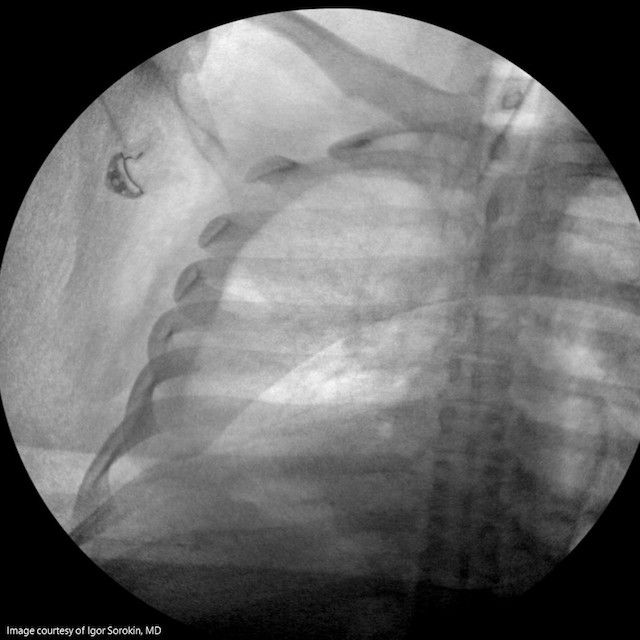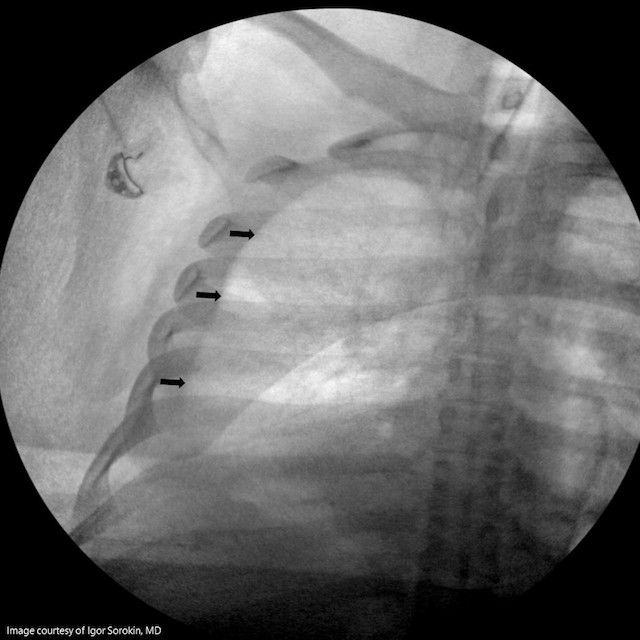Article
[Quiz]: Abnormality seen in post-PCNL imaging
Author(s):
A 42-year-old female undergoes right percutaneous nephrolithotomy (PCNL) for a complete staghorn calculus. As a routine after PCNL, a chest-x-ray was obtained using fluoroscopy. What abnormality is seen?

A 42-year-old female undergoes right percutaneous nephrolithotomy (PCNL) for a complete staghorn calculus. Upper pole access was obtained by going above the 12th rib. Only one access was needed to clear the entire stone burden. As a routine after PCNL, a chest-x-ray was obtained using fluoroscopy as shown in figure 1.
Continue to the next page for the answer.
Answer:
B. Hydrothorax
Discussion
Intraoperative chest fluoroscopy is as sensitive as postoperative plain chest radiography for detecting clinically significant hydrothoraces. It should be routine to evaluate the lung fields at the conclusion of PCNL, especially after upper pole access. In this case, as shown in figure 2, intraoperative chest fluoroscopy revealed fluid within the pleural space compressing the lung (arrows). The same equipment used to obtain percutaneous renal access can be reused to place a 10 Fr Cope loop nephrostomy tube into the pleural cavity. The tube is then connected to a Pleur-evac to maintain negative pressure.

Upper calyceal and staghorn stones are more commonly managed by upper pole access. In the large multicenter Clinical Research Office of the Endourological Society (CROES) PCNL study, the overall complication rate was higher in the upper pole compared to lower pole group, with a higher incidence of hydrothorax (5.8% vs. 1.5%). Supracostal access above the 11th rib has an odds ratio of 5.59 for hydrothorax compared to the 12th rib.

Dr. Sorokin, endourology fellow at the University of Texas Southwestern Medical Center, Dallas, is section editor for Urology Times Clinical Quiz.
Suggested reading
Isolated upper pole access in percutaneous nephrolithotomy: A large-scale analysis from the CROES percutaneous neprolithotomy global study. J Urol 2013; 189:568-73.
Sensitivity of chest fluoroscopy compared with chest CT and chest radiography for diagnosing hydropneumothorax in association with percutaneous nephrostolithotomy. Urology 2003; 62:988-92.
Oops we got in the chest: fluoroscopic chest tube insertion for hydrothorax after percutaneous nephrostolithotomy. Urology 2002; 60:1098-9.
To get weekly news from the leading news source for urologists, subscribe to the Urology Times eNews.

















